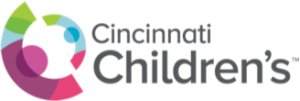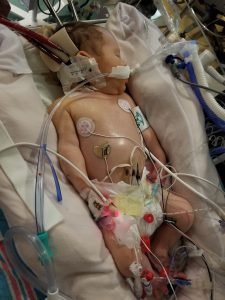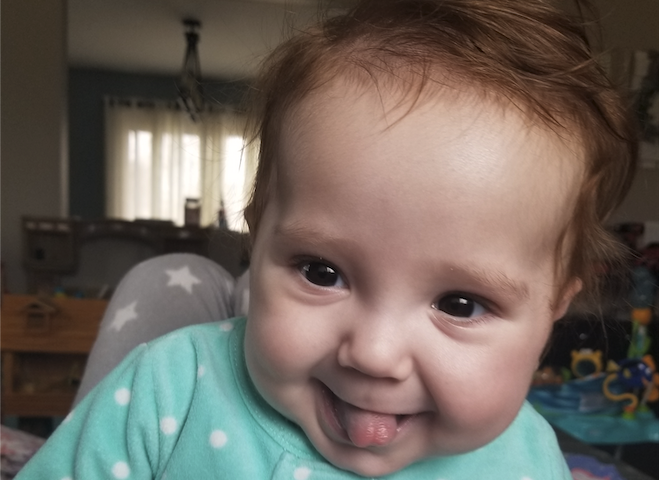Led by physicians from Cincinnati Children’s, TriHealth and University of Cincinnati Medical Center; the Cincinnati Fetal Center is one of a few comprehensive fetal care centers in the world. Mila’s story appears with their permission.

Real Hope for Real Families
Our world-renown care for rare fetal abnormalities is what brought Maddie Zito to us for prenatal care for her unborn baby Mila. “When I found out Mila had CDH during a routine anatomy scan, everything changed,” said Maddie. “We decided to come to Cincinnati for care almost immediately.”
CDH stands for congenital diaphragmatic hernia. CDH occurs when there is a hole in the baby’s diaphragm (the muscle that separates the chest from the abdomen). When this happens, contents from the abdomen migrate into the chest, which crowds the lungs and prevents them from developing normally.
Dr. Foong-Yen Lim, surgical director at the Cincinnati Fetal Center, understands why families come to us for care. “We have a long-standing team that is dedicated to taking care of babies with CDH. This is different from a lot of other hospitals, where you’re getting care from whoever is the doctor on-call that day,” said Dr. Lim.
An Innovative Answer
When Maddie returned to us for her 30-week prenatal check-up, a routine ultrasound revealed that Mila’s CDH had become severe, and met criteria as a candidate for fetoscopic endoluminal tracheal occlusion (FETO), a breakthrough procedure currently under investigation as research protocol, that may help improve lung growth before birth.
“Mila’s odds of survival without the procedure were not good,” said Maddie. “We wanted to try everything we could.”
Cincinnati Fetal Center is one of the few places in the nation to offer this minimally invasive procedure that involves inserting a tiny balloon into the fetus’ trachea. Performed by one of the most skilled and experienced teams of physicians in the world, this was Mila’s chance at survival.
“In severe cases of CDH, the survival rate is ranging from less than 20% to 50%, but with FETO, we’re seeing a huge improvement in odds of survival,” said Dr. Lim. “Right now, it looks like survival rates as high as 80-90% are possible, but we’re still learning.”
Maddie and Mila underwent the FETO procedure after extensive evaluation and counseling, and the entire family stayed in Cincinnati until Mila was born.
A Two-part Solution
“The FETO procedure has two parts, so it’s important for mothers to stay near us between the procedures,” said Dr. Lim.
First, a balloon is placed in the unborn baby’s trachea or windpipe. The balloon blocks the trachea and remains in place for a few weeks. This allows fluid produced by the lungs to build up below the balloon and that may help the lungs to grow. After several weeks, the balloon is removed in order for the lungs to mature and to allow the baby to breath after birth.
This is just how the process worked for Maddie and Mila. Once the balloon was inserted, Maddie stayed near the hospital for weekly ultrasounds and to monitor Mila’s heart rate and well-being. One of the fetal nurses called every day to check in.
“They did a phenomenal job of preparing us for what was coming and calling constantly to check in and make sure we were comfortable with everything,” said Maddie.
Care Continues Beyond Delivery
After the FETO procedure, healthy mothers like Maddie deliver at Cincinnati Children’s. Our Special Delivery Unit is located inside one of the best pediatric hospitals in the world on the same floor as our top-ranked NICU. “Mom is near her baby after delivery,” said Dr. Lim, “And the baby is not subjected to the risk or stress of transportation or travel from one hospital to another.”

With newly expanded 24/7 triage for all delivery types, the Special Delivery Unit allows healthy moms whose babies face complex conditions like CDH to recover right down the hall from their babies.
And, care continues after delivery. From the moment your baby is born, they are surrounded by the expertise, excellence, and exceptional care that only Cincinnati Children’s NICU and CICU can offer.
For Mila, this made a huge difference. After more than three months in the NICU, they brought Mila home. But then, things took a turn for the worse. “After 17 days home, she wasn’t doing so hot. So we came back for her surgery, and she’s been doing fantastic ever since,” said Maddie. “Oh and here’s the most amazing part! Mila came home both times from the hospital without oxygen. This is so rare for kids with her condition, and we think it’s because of the FETO.”
Dr. Lim agrees, saying, “With FETO, we find that a higher number of patients with severe CDH are able to go home without oxygen supplementation and their overall length of stay is shorter.”
From Surviving to Thriving
Now, Maddie brings Mila to Cincinnati Children’s to see a psychologist for her developmental assessments. This is part of the FETO study that allows us to learn how these babies are doing as they grow.
Maddie gushes that Mila is doing phenomenally. “She’s doing better than we could have imagined. She even scored ‘superior’ in her fine and gross motor skills, and we are thrilled.”
Dr. Lim, who personally follows up with every family long-term after the FETO procedure, said, “We offer the full package, starting from time of counseling and ending with long-term follow up.”
Call us at 1.888.FETAL59 or visit us at Fetal Care Center to learn more or request an appointment.
—
Read more about CDH:
Congenital Diaphragmatic Hernia
The Happiest Little Baby: Chase’s CDH Survivor Story
New Fetal Surgery Treatment for Congenital Diaphragmatic Hernia
FETO study in the journal Obstetrics & Gynecology
—
Learn more about how the Fetal Health Foundation supports research to give hope to young families

